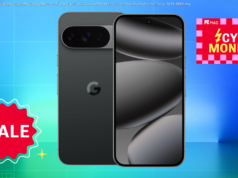 Inventor. Visionary. Futurist.
Inventor. Visionary. Futurist.
This is Alex Kipman, the man behind Microsoft’s HoloLens augmented reality goggles, one of the company’s most ambitious products. That seems like a fitting challenge for someone who was admitted to Microsoft’s Hall of Legends in 2011 for his work on the Kinect motion controller.
But two years after the Brazil-born Kipman introduced HoloLens in January 2015, the goggles — which overlay virtual 3D images on what you’re seeing in the real world — still haven’t been released to consumers. (Developers can buy the HoloLens Development Kit for $3,000, while companies can pick up the HoloLens Commercial Suite for $5,000.)
CNET en Español’s Gabriel Sama caught up with Kipman at Microsoft’s headquarters in Redmond, Washington, to talk about the future of the HoloLens, its potential as a consumer device and Microsoft’s biggest challenges with AR. Oh, and they also discussed Pokemon Go.
Here’s an edited version of the conversation.
Microsoft’s Alex Kipman comes onstage at a Windows 10 press event on Jan. 21, 2015 to introduce Windows Holographic and HoloLens.
Based on demand and where the business is going, we’re in nine different countries today. We’re in many places in Europe and we just launched in Japan. And we announced in December that we’re coming to China. [That’s] super interesting because, to some extent, this mixed reality world is going mainstream in China first.
There exist two universes today. The universe you and I live in and the digital one made out entirely of bits. Mixed reality is the intersection of both these universes — to all of a sudden be able to displace space and time without having to deal with all of these digital interfaces that are so unnatural. Without all of this magic being trapped behind a 2D screen.
What if, all of the sudden, we could have this level of interactivity [and] perception where all of our senses are saturated with all of the information that’s happening here, but you happen to not be here? You are still in San Francisco sitting on a couch in front of me [in Redmond] having this level of connectivity. To some extent, that is the value proposition of mixed reality. If this is done right, there is no education required. You [already] know what it feels like to sit here and have a conversation with me, you don’t have to learn it. It’s about more human ways of interacting with technology.
There are three things. First and foremost, there has to be physical comfort when putting the device on. No. 2, it needs to be immersive — to actually feel like it belongs there. And last, it needs to transform me and allow me to do something that cannot be done through another medium or through other device. That’s a great first experience and that is what we tried to build into this.
Alex Kipman in Microsoft’s Redmond offices, January 2017.
Mixed reality is a new medium for how we interact with technology. But when you talk about mixed reality with AI as the intelligence that powers it, [we’re talking] the future of computing. And the goal, to get philosophical, is to essentially allow new types of conversations to happen — where we are spending time together as humans, but with technology transparently around us. Essentially empowering us to do more, to achieve more, to be more creative.
Your point is super valid. To some extent, that’s why we called HoloLens a dev kit to start, but that’s a very explicitly picked [term]. It’s so we can learn. So that we don’t rush to that first impression that is frustrating to customers.
I’m in the business of building fans. I want people to love our products, and I want to build this community. And I think that it is a journey that we have to go through as a tribe and it’s generational in a sense.






